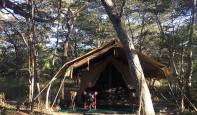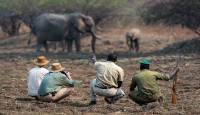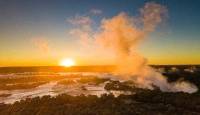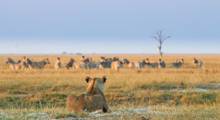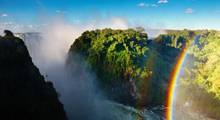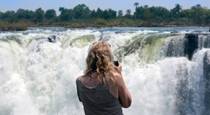Known locally as Mosi-ao-Tunya, “the smoke that thunders,” Victoria Falls is one of the largest waterfalls in the world, attracting roughly one million visitors a year. One of the natural world wonders and a UNESCO World Heritage Site, Victoria Falls, between Zimbabwe and Zambia is one of southern Africa’s most popular destinations.
The historical town of Victoria Falls bustles with people and animals alike. It is a major tourist hub and is full of curio shops, restaurants and hotels. Accommodation in Victoria Falls ranges from five star hotels and guesthouses to more remote camps and lodges.
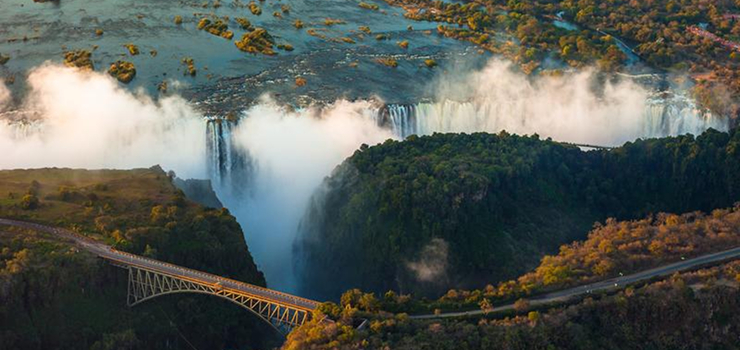
There are a number of places from which to view the falls, on both the Zambian and Zimbabwean side, but the Zimbabwean side offers arguably the best views, even if it does mean being drenched by the spray. In terms of viewing the falls, the best time to visit Victoria Falls varies, but they are at their strongest in April/May, but July/August is a better time to photograph the falls as they are not hidden by spray.
The Victoria falls climate is sub-tropical, with hot humid summers and mild dry winters. Summers are wet, with most annual rain falling between November and March. Spring sees some of the hottest temperatures, reaching up to 40 °C/104 °F, with most of the warmest days falling in October. Winter daytime temperatures average about 26°C/79°F, dropping to 8°C/46 °F at night.
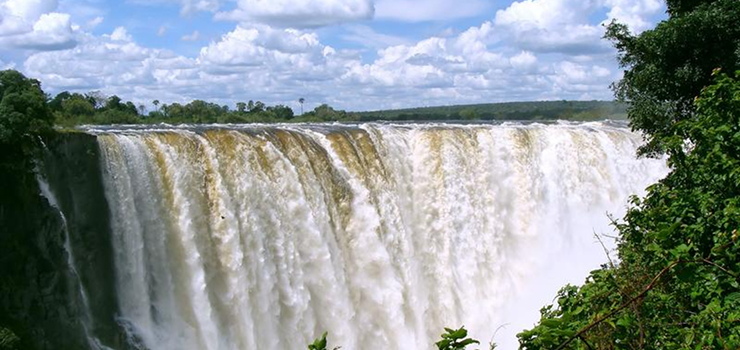
Victoria Falls is an extreme sport hotspot, with myriad activities available for thrill seekers. From late August to January when the water levels are lower, the truly brave can take an exhilarating swim at the edge of the falls in Devil’s pool. From bungee jumping and bridge swinging, to ziplining, abseiling and canopy tours, there is no shortage of adrenaline-inducing adventure to be found in and around Victoria Falls.
The most popular adventure activity is white water rafting, with the Zambezi being one of the best rivers in Southern Africa to paddle. The best and safest time to paddle is between November and December, when the levels are low. Canoe and rafting trips allow for a unique game viewing experience, with opportunities to see animals such as elephants along the banks, and hippo and crocodiles in the shallows.
For the less adventure-oriented traveller, fun can be had on the water in the form of sunset boat cruises, which give guests the opportunity to sip a sundowner while looking for game. Nature-lovers can spend time away from the falls, with plenty of day trip options in the immediate area, as well as multiday safaris. On the Zimbabwean side of the falls, the Victoria Falls rain forest, caused by the constant spray, is home to over 400 plant species.
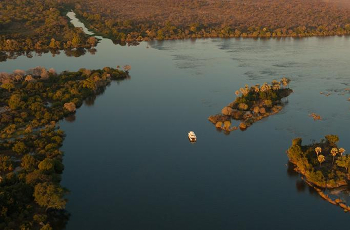
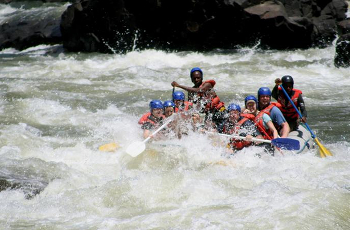
The surrounding Zambezi National Park, located upstream from the falls is a pristine, but lesser known nature reserve. The 56 000ha reserve is home to over 400 species of bird, and some big five animals including elephant, buffalo, lion and leopard, as well as various antelope and other small game. Within travelling distance are also Chobe National Park in Botswana and Hwange National Park.
There are a number of airports in Zimbabwe and Zambia that provide access to Victoria Falls, the closest being Victoria Falls Airport, which is 20km away from the town itself. Livingstone, on the Zambian side is also a good entry point.
